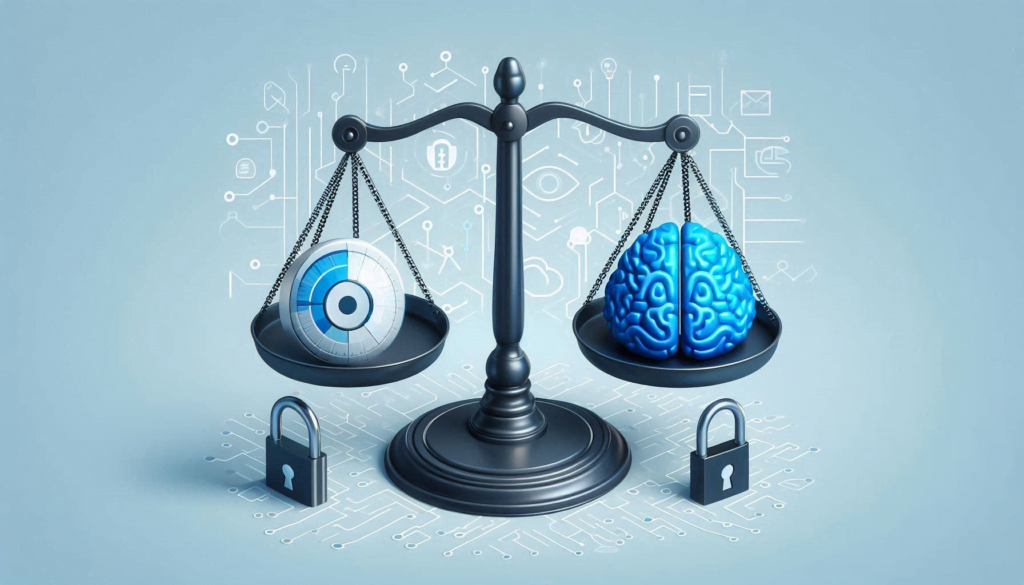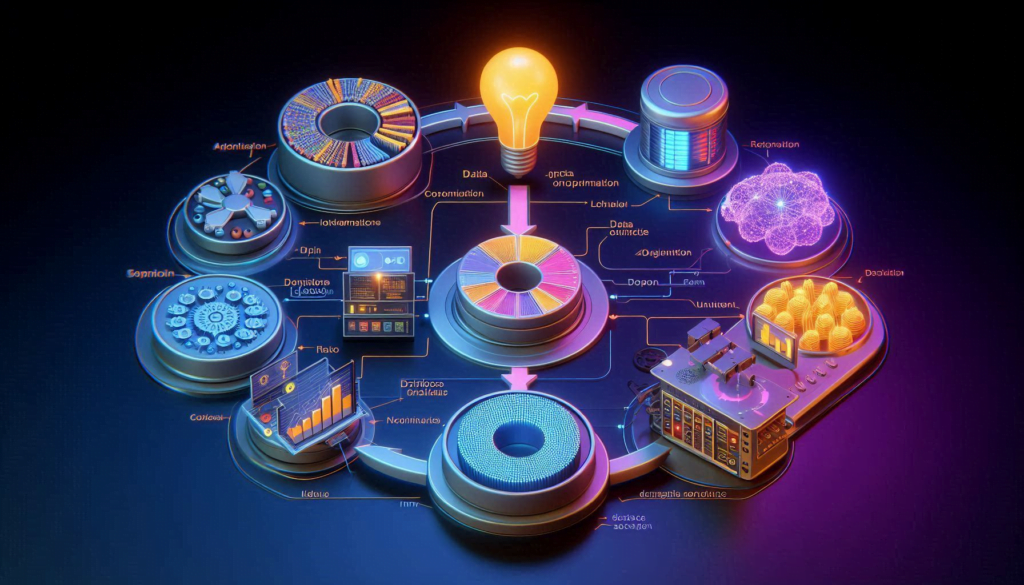Welcome to the Technology Moment Blog Series! In an era where authenticity is paramount, the battle against counterfeiting has never been more crucial. Join us as we delve into the cutting-edge world of anti counterfeiting technology companies, where innovation meets necessity to safeguard industries and consumers alike. From blockchain solutions securing supply chains to advanced biometric identifiers thwarting counterfeit goods, explore how these companies are shaping the future of trust and integrity in a digital age. Step into the forefront of technological innovation with us, where every moment counts in the fight against counterfeiters.
In today’s global marketplace, the proliferation of counterfeit goods poses a significant threat to businesses, consumers, and economies worldwide. The rise of counterfeiting has become a pressing issue, with counterfeit products infiltrating various industries, from luxury goods and electronics to pharmaceuticals and everyday consumer products. The need for robust anti-counterfeiting technologies has never been more critical to safeguard the authenticity and integrity of products.
Importance of Anti-Counterfeiting Technologies
Anti-counterfeiting technologies are essential tools that help businesses and consumers distinguish between genuine and fake products. These technologies not only protect brand reputation but also ensure consumer safety, maintain product quality, and uphold legal and ethical standards. By implementing advanced anti-counterfeiting measures, companies can secure their supply chains, reduce financial losses, and enhance customer trust.
The Rise of Counterfeiting in the Global Market
Counterfeiting has grown exponentially with the advent of globalization and the expansion of e-commerce. The ease of online transactions and the global reach of digital marketplaces have provided counterfeiters with new avenues to distribute fake goods. According to the International Chamber of Commerce, the global economic value of counterfeiting and piracy could reach $4.2 trillion by 2022, highlighting the urgent need for effective countermeasures.
Counterfeit products not only undermine legitimate businesses but also pose significant risks to consumer health and safety. For instance, counterfeit pharmaceuticals can contain harmful substances, leading to severe health consequences. Similarly, counterfeit electronics can malfunction, causing accidents and injuries. As a result, the development and implementation of cutting-edge anti-counterfeiting technologies are crucial in combating this pervasive issue.
In this article, we will delve into the various anti-counterfeiting technologies available, explore the leading companies in the field, and examine the challenges and future trends in the industry. By understanding the importance and impact of these technologies, businesses can make informed decisions to protect their products, brand, and consumers in the fight against counterfeiting.
Table of Contents
What is Anti counterfeiting technology companies?
Anti-counterfeiting technology refers to the various methods, tools, and techniques used to prevent, detect, and combat the production and distribution of counterfeit goods. These technologies are designed to safeguard the authenticity and integrity of products, ensuring that consumers receive genuine items and businesses protect their brand reputation and revenue.
Common Methods Used
- Holograms and Watermarks
- Holograms: These are three-dimensional images embedded in product packaging or labels that are difficult to replicate. They are commonly used in currency, credit cards, and high-value products to verify authenticity.
- Watermarks: Typically found on paper products like certificates, passports, and banknotes, watermarks are subtle designs embedded during the manufacturing process, making them hard to forge.
- RFID Tags
- Radio Frequency Identification (RFID): RFID tags contain electronic information that can be scanned and verified. They are used in various industries, including retail and logistics, to track and authenticate products throughout the supply chain.
- Blockchain Technology
- Blockchain: This decentralized ledger system provides a tamper-proof record of transactions. In the context of anti-counterfeiting, blockchain can track the entire lifecycle of a product, from production to the final consumer, ensuring each step is recorded and verified.
- Microprinting
- Microprinting: Often used on currency and legal documents, microprinting adds an extra layer of security.
- Smart Labels and Barcodes
- Smart Labels: These labels contain advanced features like QR codes, NFC chips, or unique serial numbers that can be scanned to verify product authenticity.
- Barcodes: Traditional barcodes, when combined with digital databases, allow for the tracking and verification of products, ensuring they have not been tampered with or replaced.
The Impact of Counterfeiting on Businesses
Counterfeiting poses a significant threat to businesses across various industries. It not only leads to financial losses but also affects brand reputation and incurs legal consequences. Understanding these impacts is crucial for businesses to recognize the importance of investing in anti-counterfeiting technologies.
Financial Losses
One of the most immediate and tangible impacts of counterfeiting on businesses is financial loss. Counterfeit products often flood the market at lower prices, drawing customers away from legitimate products. This results in a significant decrease in sales revenue for authentic brands. Additionally, companies may incur substantial costs in efforts to combat counterfeiting, such as implementing new technologies, conducting market surveillance, and taking legal action against counterfeiters.
Damage to Brand Reputation
Counterfeit products, which are usually of inferior quality, can damage the trust and loyalty that customers have towards a brand. When customers unknowingly purchase counterfeit goods and have negative experiences, they may blame the brand, leading to a decline in customer satisfaction and loyalty. Over time, this can erode the brand’s market position and competitive edge.
Legal Consequences
Businesses also face legal consequences due to counterfeiting. Protecting intellectual property rights involves legal actions, which can be both time-consuming and costly. Companies may need to engage in lengthy litigation processes to defend their trademarks, patents, and copyrights. Moreover, businesses must comply with various regulations and standards related to anti-counterfeiting measures. Failure to adequately protect their products can result in fines and other legal penalties.
Types of Anti-Counterfeiting Technologies
Anti-counterfeiting technologies encompass a wide range of methods and tools designed to verify the authenticity of products and protect against the production and distribution of counterfeit goods. Here, we delve into some of the most commonly used and effective anti-counterfeiting technologies.

Holograms and Watermarks
Holograms are three-dimensional images created with photographic projection. They are commonly used on credit cards, passports, and high-value products to provide a visible mark of authenticity. Holograms are difficult to replicate due to the complexity of their production process, which involves laser beams and light interference.
Watermarks are subtle designs embedded into paper during the manufacturing process. These marks are often used on currency, legal documents, and certificates to deter forgery. Watermarks are nearly impossible to duplicate without the original production equipment, making them a reliable anti-counterfeiting measure.
RFID Tags
Radio Frequency Identification (RFID) tags are small electronic devices that can be attached to products. RFID tags are widely used in supply chain management, retail, and inventory tracking. They help verify the authenticity of products by providing unique identifiers that can be traced back to the manufacturer.
Blockchain Technology
In the context of anti-counterfeiting, blockchain can be used to track the entire lifecycle of a product from its origin to the end consumer. Each transaction or movement of the product is recorded in a block, which is linked to the previous one, creating a chain. This makes it nearly impossible to alter the information without detection, ensuring the authenticity of the product.
Microprinting
Microprinting involves printing tiny text or intricate designs on products or packaging that are difficult to reproduce without specialized equipment. This technique is commonly used on banknotes, checks, and official documents. Microprinted text often appears as a solid line to the naked eye but can be read clearly under magnification, providing a hidden layer of security.
Smart Labels and Barcodes
Smart labels and barcodes are used to store data about a product, such as its origin, manufacturing details, and batch number. These labels can be scanned using a smartphone or specialized device to verify the product’s authenticity. Smart labels often incorporate QR codes, which link to an online database where consumers can check product information. Advanced smart labels may also include NFC (Near Field Communication) technology for contactless verification.
These technologies are just a few examples of the diverse and innovative methods used to combat counterfeiting. Each has its unique advantages and applications, making them essential tools in protecting the integrity of products and brands worldwide.
Leading Anti-Counterfeiting Technology Companies
In the battle against counterfeiting, several companies have emerged as leaders by developing innovative and effective anti-counterfeiting technologies. These companies offer a range of solutions that help businesses protect their products, brands, and consumers from the growing threat of counterfeit goods. Here’s a closer look at some of the leading anti-counterfeiting technology companies:
Avery Dennison
The company offers a wide array of anti-counterfeiting solutions, including:
- Smart Labels: These labels combine RFID (Radio Frequency Identification) technology with traditional labeling to provide a unique digital identity for each product. This helps in tracking and authenticating products throughout the supply chain.
- Tamper-Evident Labels: Designed to show visible signs of tampering, these labels provide an additional layer of security.
- Security Printing: Advanced printing techniques that include microtext, color-shifting inks, and holographic images to deter counterfeiting.
Avery Dennison’s solutions are widely used in industries such as apparel, pharmaceuticals, and consumer electronics.
Authentix
Authentix specializes in providing comprehensive authentication and track-and-trace solutions. Their services include:
- Secure Markers: Proprietary chemical markers that are added to products or packaging, enabling easy verification of authenticity.
- Digital Solutions: Tools that integrate with mobile apps and cloud-based platforms to provide real-time product authentication and track-and-trace capabilities.
- Consulting Services: Expertise in designing and implementing customized anti-counterfeiting programs.
Authentix has a strong presence in the fuel, pharmaceuticals, and consumer goods sectors, helping companies ensure the integrity of their products.
SICPA
SICPA is known for its high-security ink solutions and integrated systems that protect the integrity of banknotes, identity documents, and products. Their offerings include:
- Security Inks: Used for printing banknotes, passports, and product packaging, these inks incorporate advanced security features like UV fluorescence and color-shifting properties.
- Track and Trace Systems: Comprehensive systems that allow for the tracking and authentication of products throughout the supply chain.
- Tax Stamp Solutions: Secure tax stamps that help governments and companies combat tax evasion and ensure product authenticity.
SICPA’s technologies are widely adopted by governments and multinational corporations to safeguard their products and revenue.
Systech
Systech provides advanced digital solutions to protect product integrity and ensure supply chain security. Their key offerings include:
- e-Fingerprint Technology: A unique digital identifier for each product, generated from existing barcodes without the need for additional hardware or changes to packaging.
- Track and Trace Solutions: Systems that enable real-time visibility and traceability of products throughout the supply chain.
- Authentication Services: Tools that allow consumers and businesses to verify the authenticity of products using smartphones and other devices.
Systech’s solutions are popular in the pharmaceutical, food and beverage, and consumer goods industries.
AlpVision
AlpVision specializes in digital and invisible anti-counterfeiting technologies that are easy to implement and highly effective. Their solutions include:
- Digital Imaging: Advanced imaging technology that can detect unique patterns and characteristics of genuine products, making it easy to identify counterfeits.
- Cryptoglyph Technology: An invisible digital marking that can be printed on products and packaging, providing a hidden layer of security.
- Mobile Authentication: Solutions that allow consumers and inspectors to verify product authenticity using smartphone apps.
AlpVision’s technologies are used in a variety of industries, including pharmaceuticals, tobacco, and luxury goods.
Case Studies: Success Stories in Anti-Counterfeiting
Pharmaceutical Industry
The pharmaceutical industry is one of the most heavily impacted by counterfeiting. Fake drugs not only lead to financial losses but also pose serious health risks to consumers. To combat this, several anti-counterfeiting technologies have been successfully implemented.
Pfizer and RFID Technology: Pfizer, a global pharmaceutical giant, faced significant challenges with counterfeit versions of its popular drug, Viagra. To tackle this, Pfizer integrated RFID (Radio-Frequency Identification) technology into its packaging. RFID tags contain electronically stored information that can be scanned to verify the authenticity of the product. This move significantly reduced the circulation of counterfeit Viagra, ensuring that consumers receive genuine medication.
Blockchain in the Pharmaceutical Supply Chain: Another example is the implementation of blockchain technology by MediLedger. This platform creates an immutable ledger that tracks the journey of pharmaceutical products from manufacture to consumer. By recording every transaction, it ensures that drugs are authentic and have not been tampered with or replaced by counterfeit versions. This technology has been adopted by several pharmaceutical companies, leading to a significant reduction in counterfeit drugs in the market.
Luxury Goods
The luxury goods market is another sector heavily affected by counterfeiting. High-end brands invest millions in creating exclusive products, only to see counterfeit versions flood the market. Here’s how some companies have successfully tackled this issue:
Louis Vuitton and Holograms: Louis Vuitton, a renowned luxury brand, uses holographic labels on its products. These labels are difficult to replicate and provide a clear visual indication of authenticity. By integrating holograms, Louis Vuitton has been able to protect its brand integrity and ensure that customers receive genuine products.
Chanel and Microprinting: Chanel has adopted microprinting technology, which involves printing tiny, intricate patterns or text on its products. These details are often invisible to the naked eye but can be verified with magnification. Microprinting is extremely challenging for counterfeiters to reproduce accurately, thus helping Chanel safeguard its luxury items.
Electronics
The electronics industry also faces significant threats from counterfeit products, which can lead to safety hazards and undermine consumer trust. Several companies have turned to advanced anti-counterfeiting technologies to address this problem.
Apple and Serialized Barcodes: Apple has implemented serialized barcodes on its products. Each product receives a unique barcode that can be scanned to verify its authenticity. This system not only helps in tracking genuine products but also in identifying counterfeit items in the supply chain.
Samsung and Smart Labels: Samsung employs smart labels with NFC (Near Field Communication) technology. These labels can be scanned using a smartphone app to verify the product’s authenticity. By incorporating smart labels, Samsung ensures that customers can easily check the genuineness of their electronics, thereby reducing the circulation of counterfeit products.
Automotive Industry
The automotive industry is also plagued by counterfeit parts, which can compromise vehicle safety and performance. To combat this, several companies have adopted robust anti-counterfeiting measures.
Bosch and Digital Fingerprinting: Bosch, a leading automotive parts manufacturer, uses digital fingerprinting technology. Each part is embedded with a unique digital fingerprint that can be scanned and verified. This technology ensures that only genuine parts are used in vehicles, enhancing safety and reliability.
GM and Blockchain: General Motors (GM) has explored the use of blockchain technology to track the authenticity of automotive parts. By creating a secure and transparent ledger of parts’ origins and movements, GM can ensure that only legitimate components are used in its vehicles. This reduces the risk of counterfeit parts entering the supply chain.
Food and Beverage Industry
Counterfeit products in the food and beverage industry can pose serious health risks to consumers. Several companies have implemented innovative anti-counterfeiting measures to address this issue.
Nestlé and QR Codes: Nestlé uses QR codes on its product packaging. Consumers can scan these codes with their smartphones to access detailed information about the product’s origin, manufacturing process, and authenticity. This transparency helps build consumer trust and ensures that only genuine products reach the market.
Diageo and Tamper-Evident Seals: Diageo, a leading beverage company, employs tamper-evident seals on its bottles. These seals provide a clear indication if the product has been tampered with, ensuring that consumers receive authentic beverages. This simple yet effective measure helps maintain product integrity and consumer safety.
The Role of Government and Legislation
Regulations and Standards: Governments play a critical role in the fight against counterfeiting by establishing regulations and standards that manufacturers and businesses must follow. These regulations often require companies to implement specific anti-counterfeiting measures to protect their products and consumers. For example, the pharmaceutical industry is heavily regulated, with laws mandating the use of serialization and traceability systems to prevent counterfeit drugs from entering the supply chain. These regulations ensure that there is a legal framework supporting the use of advanced technologies to verify the authenticity of products.
International Collaboration: Governments collaborate with each other through international agreements and organizations to combat counterfeiting effectively. Treaties such as the Agreement on Trade-Related Aspects of Intellectual Property Rights (TRIPS) provide a framework for countries to enforce intellectual property rights and take action against counterfeit goods. Additionally, organizations like the World Customs Organization (WCO) and Interpol facilitate information sharing and joint operations to identify and dismantle counterfeiting networks that operate across borders.
Enforcement and Penalties: Effective enforcement of anti-counterfeiting laws is crucial in deterring counterfeiters. Governments employ various agencies, including customs, police, and intellectual property offices, to monitor and take action against counterfeit activities. These agencies conduct raids, seize counterfeit goods, and prosecute those involved in the production and distribution of fake products. Strong penalties, such as hefty fines and imprisonment, serve as a deterrent to potential counterfeiters. Publicizing successful enforcement actions also raises awareness and underscores the seriousness of counterfeiting crimes.
Support for Innovation: Governments can support the development and adoption of anti-counterfeiting technologies by providing funding and incentives for research and innovation. Grants and subsidies for companies working on cutting-edge anti-counterfeiting solutions can accelerate the development of new technologies. Furthermore, government partnerships with private sector companies can foster the creation of more effective and scalable anti-counterfeiting measures. By investing in innovation, governments help ensure that businesses have access to the latest tools to protect their products.
Consumer Education and Awareness: Educating consumers about the dangers of counterfeit products and how to identify them is another crucial aspect of the government’s role. Public awareness campaigns can inform consumers about the risks associated with counterfeit goods, such as safety hazards and financial losses. Governments can also provide resources, such as online databases and mobile apps, that allow consumers to verify the authenticity of products before purchasing them. An informed public is less likely to unknowingly support the counterfeit market, reducing demand for fake products.
Policy Development and Adaptation: As counterfeiters continually evolve their methods, governments must adapt their policies and strategies to stay ahead. This involves regularly reviewing and updating legislation to address new challenges and technological advancements. Governments can also engage with industry stakeholders, including anti-counterfeiting technology companies, to understand emerging trends and incorporate their insights into policy development. By staying proactive, governments can create a dynamic regulatory environment that effectively combats counterfeiting.
Collaboration with Industry and Academia: Collaboration between governments, industry, and academia is essential for developing comprehensive anti-counterfeiting strategies. Governments can facilitate partnerships that bring together the expertise of technology companies, manufacturers, and researchers to create innovative solutions. These collaborations can lead to the development of standardized anti-counterfeiting protocols and best practices that are widely adopted across industries. Joint efforts also ensure that anti-counterfeiting measures are practical, cost-effective, and capable of addressing the unique challenges faced by different sectors.
Technological Advancements in Anti-Counterfeiting
In the ongoing battle against counterfeit products, technological advancements play a crucial role. With counterfeiting becoming more sophisticated, anti-counterfeiting measures must also evolve. Here are some of the key technological advancements in anti-counterfeiting:

AI and Machine Learning
These technologies can analyze vast amounts of data to detect patterns and anomalies that may indicate counterfeit activity. AI algorithms can monitor online marketplaces, social media platforms, and other digital channels to identify and flag counterfeit listings in real time. This proactive approach helps in swiftly removing counterfeit products from circulation.
- Example: AI can analyze product images and descriptions to compare them with genuine items, identifying discrepancies that may suggest counterfeiting.
IoT Integration
The Internet of Things (IoT) is enhancing anti-counterfeiting measures by connecting physical products to the digital world. IoT-enabled devices and smart tags can provide real-time tracking and authentication of products throughout the supply chain. By embedding IoT sensors in products, companies can monitor their journey from production to the end consumer, ensuring the integrity and authenticity of the items.
- Example: A luxury handbag equipped with an IoT-enabled tag can be tracked from the manufacturer to the retailer, ensuring it hasn’t been tampered with or replaced by a counterfeit.
DNA Tagging
DNA tagging is an innovative method where unique DNA sequences are embedded into products or their packaging. These sequences act as a molecular fingerprint that is nearly impossible to replicate. DNA tags can be verified using specialized equipment, providing a highly secure and reliable means of authentication.
- Example: Pharmaceuticals can be tagged with DNA markers, allowing for easy verification of authenticity by healthcare professionals and regulatory bodies.
How These Technologies Work Together
Combining these advanced technologies creates a robust anti-counterfeiting ecosystem. For instance, AI can continuously scan for counterfeit activity, while IoT devices ensure product integrity along the supply chain, and DNA tagging provides a final layer of authentication. This multi-layered approach makes it significantly harder for counterfeiters to penetrate the market.
Benefits of Technological Advancements
- Increased Detection Accuracy: Advanced algorithms and sensors can detect even the most sophisticated counterfeit attempts.
- Real-Time Monitoring: Continuous tracking and monitoring help in immediate identification and action against counterfeit products.
- Enhanced Consumer Confidence: Knowing that products are protected by cutting-edge technology reassures consumers of their authenticity.
- Improved Supply Chain Transparency: IoT integration ensures that every step of the product’s journey is tracked and verified.
Challenges and Considerations
While these technologies offer significant advantages, they also come with challenges:
- High Implementation Costs: Advanced technologies can be expensive to develop and deploy.
- Technical Expertise Required: Implementing and maintaining these systems requires specialized knowledge.
- Data Privacy Concerns: The extensive data collection involved in IoT and AI applications raises privacy issues that must be managed.
Challenges in Implementing Anti-Counterfeiting Measures
Implementing effective anti-counterfeiting measures is crucial for protecting brands and consumers, but it comes with several challenges.
1. High Costs
Investment in Technology: Anti-counterfeiting technologies, such as RFID tags, holograms, and blockchain systems, can be expensive to develop and implement. For many companies, especially small to medium-sized enterprises, these costs can be prohibitive. The initial investment in these technologies might not be feasible for all businesses, leading them to forgo these protective measures.
Ongoing Maintenance: Beyond the initial setup, there are ongoing costs related to maintaining and updating anti-counterfeiting systems. This includes software updates, hardware repairs, and training employees to use the new systems effectively. These recurring costs can strain budgets, particularly for businesses with tight financial constraints.
2. Technological Limitations
Adaptability and Compatibility: Not all anti-counterfeiting technologies are universally compatible. Companies may face challenges integrating new systems with their existing infrastructure. For instance, RFID technology might not work seamlessly with every type of packaging or product, requiring additional modifications.
Scalability Issues: Some technologies may work well on a small scale but struggle to handle large volumes of products or data. As businesses grow, their anti-counterfeiting measures must be able to scale accordingly. If the technology cannot keep up with increased production or distribution, it may become less effective.
3. Consumer Awareness
Lack of Education: For anti-counterfeiting measures to be effective, consumers need to be aware of how to recognize and utilize them. If consumers are not educated about the security features on products, they might not use them properly. For instance, if a product has a unique QR code that consumers can scan to verify authenticity, but they don’t know this feature exists, it won’t be effective.
Trust and Adoption: Even if consumers are aware of anti-counterfeiting technologies, they may be skeptical about their effectiveness. Building trust in these technologies and encouraging widespread adoption can be challenging. It requires consistent education efforts and clear communication about how the technologies work and why they are important.
4. Balancing Security and Usability
User Experience: Effective anti-counterfeiting measures must not only be secure but also user-friendly. If the technology adds complexity to the purchasing process or is difficult to use, it might deter consumers from engaging with it. Striking a balance between high security and ease of use is a significant challenge for companies.
Integration with Existing Systems: Many businesses have established processes and systems for production, distribution, and sales. Introducing new anti-counterfeiting technologies can disrupt these processes. Ensuring that new measures integrate smoothly with existing workflows without causing delays or inefficiencies is crucial but often challenging.
5. Countermeasures from Sophisticated Criminals
Evolving Tactics: As anti-counterfeiting technologies advance, so do the tactics of counterfeiters. Criminals continuously develop more sophisticated methods to bypass security measures. This cat-and-mouse game means that businesses must constantly update and improve their anti-counterfeiting strategies to stay ahead of counterfeiters.
Counterfeiters’ Innovations: Some counterfeiters are adept at mimicking security features, creating convincing replicas that can deceive even trained eyes. This ongoing challenge means that anti-counterfeiting technologies must not only be effective but also adaptable to counteract new methods employed by counterfeiters.
6. International Variability
Regulations and Standards: Different countries have varying regulations and standards for anti-counterfeiting measures. Companies operating internationally must navigate these diverse requirements, which can complicate the implementation of uniform security practices across all markets.
Regional Challenges: In some regions, the infrastructure or resources needed to implement advanced anti-counterfeiting technologies might be lacking. This disparity can create challenges in maintaining consistent security measures globally.
Future Trends in Anti-Counterfeiting Technology
As counterfeiting evolves, so too does the technology designed to combat it. The future of anti-counterfeiting technology is set to be shaped by several key trends that promise to enhance security, improve detection, and streamline the identification of authentic products. Here’s a detailed look at what’s on the horizon:
Predictive Analytics
Predictive analytics involves using data, statistical algorithms, and machine learning techniques to identify potential counterfeit risks before they become problems. By analyzing patterns and trends, companies can foresee areas where counterfeiting might be most likely to occur. This proactive approach helps businesses to implement preventive measures more effectively and allocate resources where they’re needed most. For instance, predictive analytics can forecast which products are at higher risk of being counterfeited based on historical data, market trends, and sales patterns.
Enhanced Security Features
Future anti-counterfeiting technologies are expected to incorporate more sophisticated security features. This includes advanced encryption methods and multi-layered security protocols that make it increasingly difficult for counterfeiters to replicate products. For example, some technologies are now integrating secure elements like cryptographic keys embedded in product labels or packaging. These keys can be verified through secure channels to confirm authenticity, adding an extra layer of security.
Increased Collaboration Between Industries
Collaboration across different industries is becoming crucial in the fight against counterfeiting. Companies are recognizing the need for a unified approach to develop and share best practices, standards, and technological innovations. This collective effort can lead to the development of new anti-counterfeiting solutions that are more effective and less costly. For instance, technology providers and industry leaders are working together to create universal standards for anti-counterfeiting technologies that can be applied across various sectors.
Integration with IoT (Internet of Things)
The Internet of Things (IoT) is set to play a significant role in anti-counterfeiting technology. IoT-enabled devices can track and monitor products throughout their lifecycle, from production to retail. Sensors and smart devices embedded in products or packaging can provide real-time data about their location and condition. This information can be used to verify authenticity and detect any tampering or diversion. For example, a product with an IoT-enabled sensor could send alerts if it deviates from its expected route or if it’s exposed to unauthorized environments.
Advanced AI and Machine Learning
Artificial Intelligence (AI) and machine learning are revolutionizing the way counterfeit products are detected. These technologies can analyze vast amounts of data to identify anomalies and patterns that might indicate counterfeiting. AI systems can be trained to recognize subtle differences between genuine and counterfeit products, even when they’re very similar. For instance, machine learning algorithms can be used to analyze images of products and detect counterfeit versions by comparing them to a database of authentic items.
DNA Tagging
DNA tagging is a cutting-edge technology that involves embedding a unique, synthetic DNA marker into products or packaging. This DNA is virtually impossible to replicate and can be used for verification purposes. Each tag carries a unique code that can be read using specialized equipment, allowing for precise identification of authentic products. DNA tagging provides a high level of security because the synthetic DNA used is highly resistant to tampering and is only detectable with specific technology.
Blockchain Integration
Blockchain technology offers a decentralized and immutable ledger that can track every transaction and movement of a product throughout its supply chain. By integrating blockchain with anti-counterfeiting measures, companies can create a transparent and secure record of a product’s journey from manufacturer to consumer. This ensures that every step of the process is recorded and can be verified, making it extremely difficult for counterfeit products to enter the market undetected.
Augmented Reality (AR) and Mobile Apps
Augmented Reality (AR) and mobile apps are increasingly being used to enhance product verification. AR apps can overlay digital information onto physical products when viewed through a smartphone or tablet, providing consumers with real-time verification of authenticity. For example, scanning a product with an AR app might reveal detailed information about its origin, production process, and verification status. This technology not only helps consumers verify the authenticity of products but also increases engagement with brands.
These future trends in anti-counterfeiting technology reflect a growing emphasis on innovation, collaboration, and advanced digital solutions. As counterfeiting techniques become more sophisticated, businesses and technology providers are continuously evolving to stay one step ahead. By embracing these trends, companies can better protect their products, safeguard their brands, and ensure consumers receive genuine goods.
Conclusion
As the world becomes more interconnected, the threat of counterfeiting grows ever more sophisticated. Anti-counterfeiting technologies have become crucial tools for businesses aiming to protect their products, brands, and reputations from the pervasive issue of counterfeit goods. Investing in these technologies is not merely a defensive measure but a proactive strategy that helps maintain trust with consumers and ensures product integrity.

For businesses, staying ahead in the fight against counterfeiting means adopting cutting-edge solutions and continuously evolving strategies to outpace counterfeiters. Anti-counterfeiting measures, whether through holograms, RFID tags, blockchain technology, or other advanced methods, play a vital role in safeguarding the authenticity of products. As technology progresses, these solutions will become even more effective, offering robust protection against the threats posed by counterfeit goods.
It is essential for companies to recognize the importance of integrating these technologies into their operations. By doing so, they not only protect their own interests but also contribute to a more trustworthy and reliable market. Encouraging businesses to invest in and prioritize anti-counterfeiting measures ensures that they remain competitive and resilient in the face of growing counterfeit challenges.
In conclusion, while the fight against counterfeiting is ongoing, the advancements in technology provide a beacon of hope. Embracing these innovations will help businesses secure their products and uphold their reputations, ultimately fostering a more secure marketplace for everyone.
FAQs – Frequently Asked Questions
What are the most common anti-counterfeiting technologies?
Common anti-counterfeiting technologies include holograms and watermarks, which are visually identifiable features embedded in products to confirm authenticity. RFID tags and smart labels are electronic solutions that use radio frequency identification to track and verify products. Blockchain technology provides a secure and transparent ledger for product histories, while microprinting and advanced barcodes add an additional layer of security by embedding intricate details that are difficult to replicate.
How do anti-counterfeiting technologies benefit businesses?
Anti-counterfeiting technologies help businesses by reducing financial losses associated with counterfeit products. They also protect brand reputation, ensuring that consumers receive genuine products and enhancing customer trust. Additionally, these technologies can prevent legal issues by providing evidence of authenticity and aiding in the prosecution of counterfeiters.
What challenges do companies face with anti-counterfeiting measures?
Companies may face several challenges when implementing anti-counterfeiting measures, including high costs associated with advanced technology and integration into existing systems. Technological limitations can also pose obstacles, as counterfeiters continuously adapt to new security features. Furthermore, ensuring consumer awareness and education about recognizing genuine products can be a significant challenge.
How can consumers identify counterfeit products?
Consumers can identify counterfeit products by looking for security features such as holograms, watermarks, or special labels. Checking the product’s packaging for inconsistencies or discrepancies, such as misspellings or poor-quality printing, can also be a sign of counterfeiting. Additionally, purchasing products from authorized retailers and verifying the product’s authenticity through online verification systems or apps can help ensure they are buying genuine items.
What is the future of anti-counterfeiting technology?
The future of anti-counterfeiting technology looks promising with advancements in artificial intelligence and machine learning, which will enhance detection and prevention methods. The integration of the Internet of Things (IoT) will offer more sophisticated tracking and monitoring capabilities. DNA tagging and other innovative technologies will further strengthen product security, making it increasingly difficult for counterfeiters to succeed. Collaboration between industries and continuous research will drive the evolution of these technologies, offering better protection for businesses and consumers alike.













